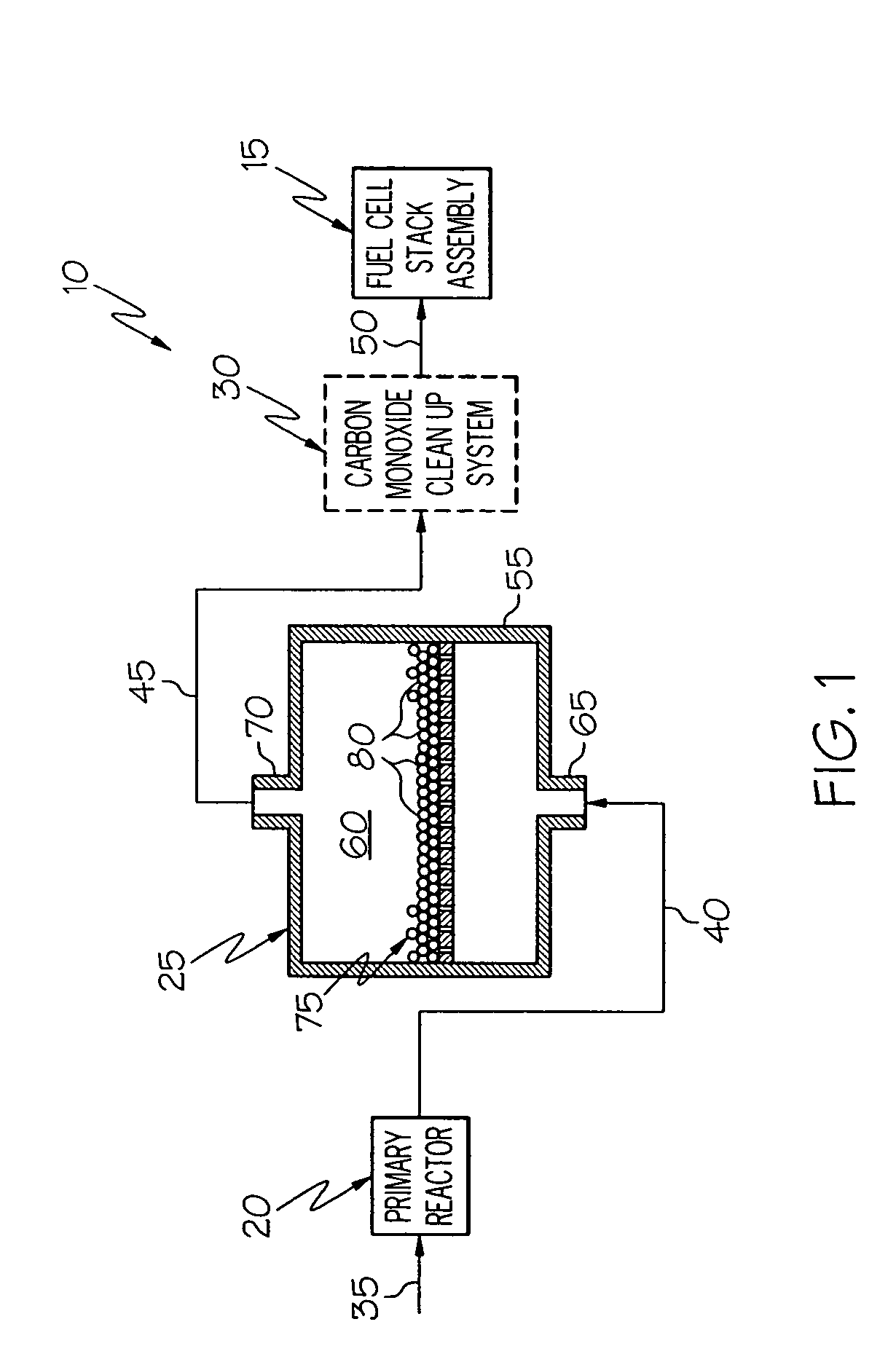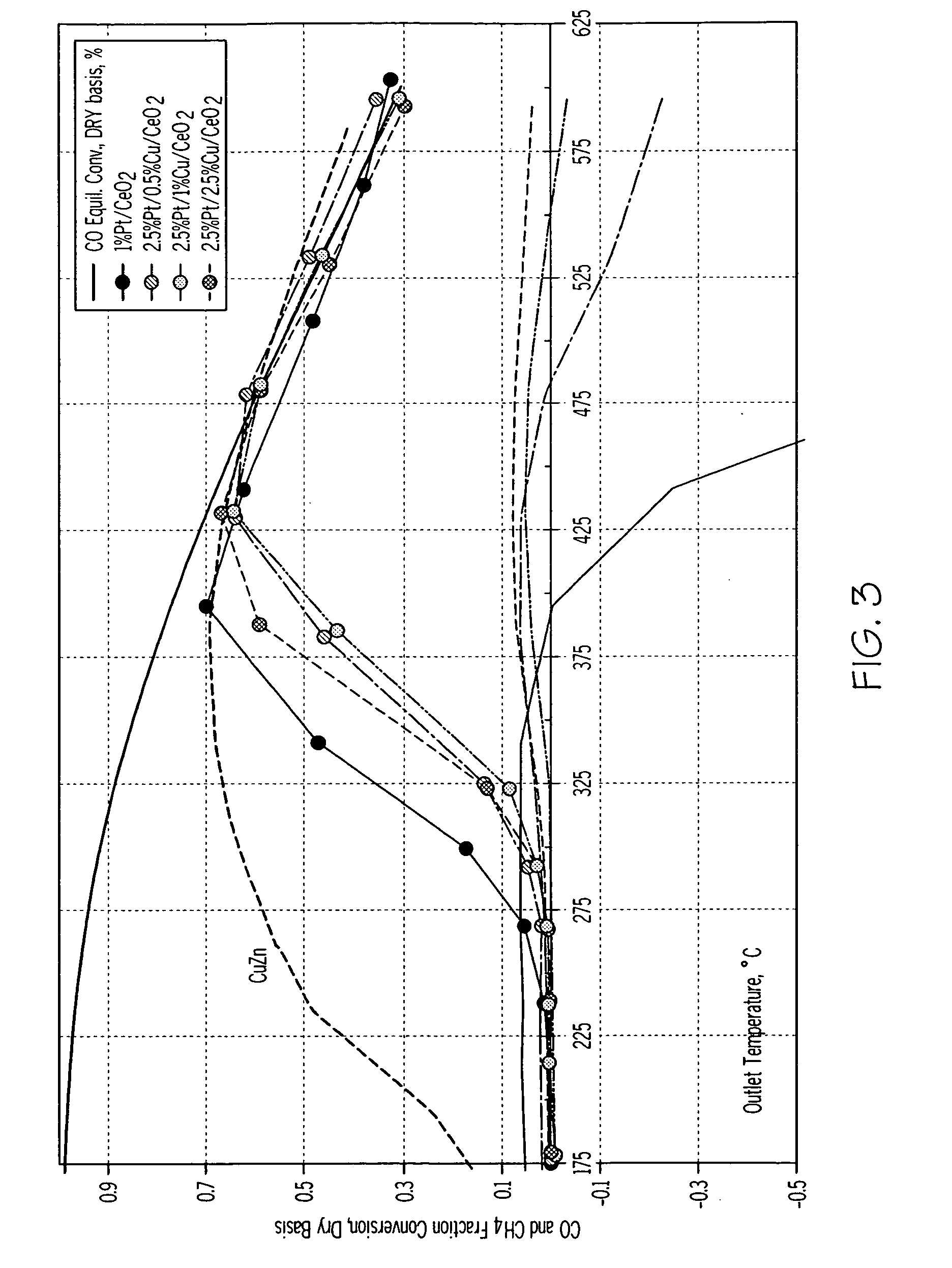High activity water gas shift catalysts with no methane formation
a technology of gas shift catalyst and high activity, which is applied in the direction of catalyst carriers, physical/chemical process catalysts, separation processes, etc., can solve the problems of high carbon monoxide in the feed stream of the fuel cell, increase the carbon dioxide and hydrogen concentration of the process gas, and poison the anode electrodes of the fuel cell. , to achieve the effect of high activity
- Summary
- Abstract
- Description
- Claims
- Application Information
AI Technical Summary
Benefits of technology
Problems solved by technology
Method used
Image
Examples
Embodiment Construction
[0026]FIG. 1 shows a schematic diagram for a fuel processing system 10 for a fuel cell stack assembly 15. The fuel cell stack assembly 15 is of conventional design and construction. The fuel processing system 10 includes a primary reactor 20, a water gas shift converter 25, and a carbon monoxide cleanup system 30. The fuel processing system 10 converts a hydrocarbon fuel source into a hydrogen-rich stream which is supplied as fuel to the fuel cell stack assembly 15. The hydrocarbon fuel source is fed into the primary reactor 20 through inlet 35. Depending on the type of primary reactor used, air and / or steam are also provided. The hydrocarbon fuel and steam and / or air react in the presence of an appropriate catalyst to produce hydrogen, carbon monoxide, carbon dioxide, and residual water in the primary reactor 20.
[0027] After exiting from the primary reactor 20, the process gas flows through channel 40 to the water gas shift converter 25. The water gas shift reaction shown above ta...
PUM
| Property | Measurement | Unit |
|---|---|---|
| temperature | aaaaa | aaaaa |
| temperature | aaaaa | aaaaa |
| temperature | aaaaa | aaaaa |
Abstract
Description
Claims
Application Information
 Login to View More
Login to View More - R&D
- Intellectual Property
- Life Sciences
- Materials
- Tech Scout
- Unparalleled Data Quality
- Higher Quality Content
- 60% Fewer Hallucinations
Browse by: Latest US Patents, China's latest patents, Technical Efficacy Thesaurus, Application Domain, Technology Topic, Popular Technical Reports.
© 2025 PatSnap. All rights reserved.Legal|Privacy policy|Modern Slavery Act Transparency Statement|Sitemap|About US| Contact US: help@patsnap.com



